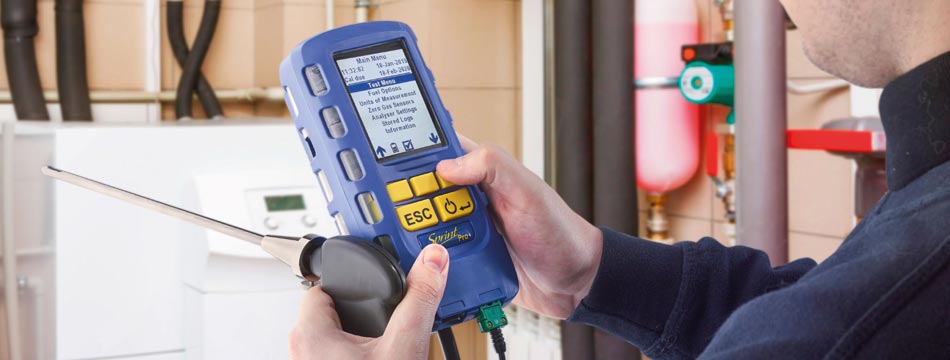
Flue gas analysers have become more popular in recent years with gas and heating engineers.
It has been suggested that the reason for this is because they sometimes avoid the need for stripping gas equipment through their ability to draw gasses directly from the flue, before providing combustion data.
Another useful feature is that they can record compliance with regulations such as the BS7967 covering safety aspects of carbon monoxide and CO: CO2 ratio parameters, and the European Design Standard EN50379 covering portable electrical devices used to measure combustion flue gas parameters.
The EN50379 European Design Standards is set to take over from the current British Standards shortly and the Government have recently set out requirements for high efficiency condensing boilers to be installed in the UK. What’s interesting about these boilers is that they are only able to gain a high efficiency rating if the gas and air mixture is set precisely. This precise setting can then be checked by a flue gas analyser.
As far as measurement ability is concerned, all flue gas analysers are able to show information on CO, CO2, CO:CO2 ratio, O2, XS Air, net and gross efficiency, flue temperature and pressure. They are also able to measure CO, oxygen, pressure and temperature and then use this information for other factors.
Readings are taken through the use of a probe, and it is easy to make fine-tuning adjustments for efficiency as the effects of any burner adjustments are given immediately.
It has been common practice to measure the health of a boiler through comparing the CO:CO2 ratio. However, as the boilers don’t always convert all the carbon, meaning that only part of it reacts with the O2 in the air, sometimes CO is left in the flue gas. Although, most of the time this is at such a low level it is almost harmless, but unventilated, old or badly maintained boilers may give off dangerous levels of CO. This means that by testing the ratio of CO:CO2, it is a simple way of checking the combustion and conversion of carbon to CO2.
Some flue gas analysers have a CO room test function to help the engineer comply with the CO safety part of the BS7967 regulations. And some are equipped with a differential thermometer, a differential manometer and a gas escape sensor. The manometer allows analysers to carry out Let-by and Specific Tightness tests, the differential thermometer allows flow and return temperatures to be measured at the same time.
Full-function analysers allow the engineer to use just one tool rather than carrying around a lot of different items. Some come with a memory to store testing results and an ability to download this information to a computer via Bluetooth.
However if the type of fuel used in an appliance or boiler has not been selected properly on the flue gas analyser in the beginning, the results will not be accurate, for instance; the readings provided if a natural gas boiler flue is selected will not be accurate if the engineer decides to test a LPG fired unit without changing the fuel type setting.
Often cost is used as a reason for not using a flue gas analyser, however the Council of Gas Detection and Environmental Manufacturers recommends that all engineers installing, maintaining and managing gas appliances should be using one.
Written by Sara Thomson


